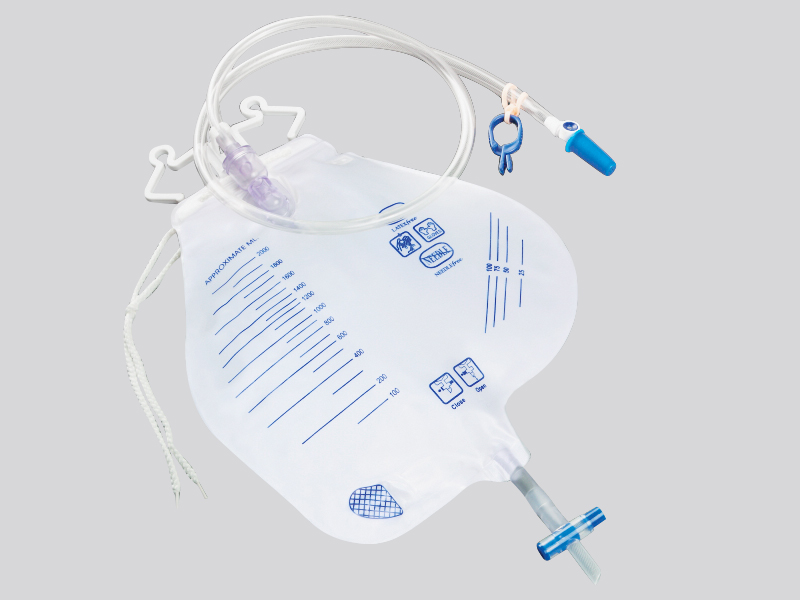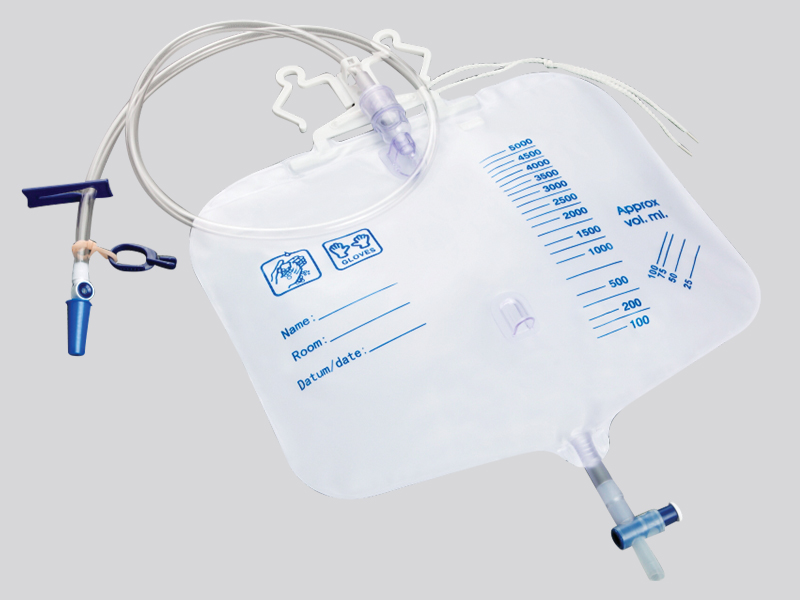The current position:Home > Information dynamic
> Industry Trends
How to use disposable drainage bags for urine drainage
source:www.cnboyi.net | Release time:2025年05月05日1. Preparation work
Hand washing: The operator should first wash their hands thoroughly to ensure cleanliness and prevent infection.
Check the drainage bag: Check whether the drainage bag is damaged, expired, etc., to ensure that it is in good and usable condition. At the same time, check whether the drainage tube is unobstructed and whether the clamp can be used normally.
2. Connect the drainage bag
Patient position: Assist the patient in finding a suitable position, usually a supine or semi supine position, to facilitate operation and ensure patient comfort.
Exposed catheter: If the patient has already placed a catheter, gently remove the adhesive tape that fixes the catheter to expose the end of the catheter.
Connecting drainage bag: Connect the drainage tube of the drainage bag tightly to the end of the catheter to ensure a secure connection and avoid urine leakage. Usually, rotation, insertion, and other methods are used for connection, and after connection, it can be checked whether the connection is tight.
3. Place and fix the drainage bag
Adjust the length of the drainage tube: According to the patient's position and actual situation, adjust the length of the drainage tube appropriately to avoid pulling caused by too short or twisting or folding caused by too long.
Fixed drainage bag: Fix the drainage bag below the level of the patient's bladder, usually using pins, hooks, etc. to secure the drainage bag to the bedside or the patient's clothing. By utilizing gravity, urine can smoothly flow into the drainage bag. Be careful not to fix the drainage bag too high to avoid urine reflux and infection.
4. Observation of drainage process
Observing urine condition: During the drainage process, pay attention to observing the color, characteristics, and quantity of urine. Normal urine is generally a light yellow transparent liquid. If abnormal urine color (such as turning red, cloudy, etc.), odor, or sudden change in urine volume is found, it should be recorded and reported to the doctor in a timely manner.
Check if the drainage is unobstructed: Regularly check if the drainage tube is twisted, compressed, blocked, etc., to ensure that urine can flow smoothly into the drainage bag. If poor drainage is found, gently squeeze the drainage tube to see if it can restore patency. If it is still not unobstructed, the cause should be promptly identified and dealt with. If necessary, the drainage bag should be replaced or the catheter should be checked for blockage.
5. Replace the drainage bag
Replacement frequency: The frequency of replacing drainage bags is generally determined based on the patient's specific condition and medical advice, usually 1-2 times a week. If the drainage bag is damaged, leaking urine, or contaminated with urine, it should be replaced in a timely manner.
Replacement operation: When replacing, first close the clamp on the drainage tube to prevent urine from flowing out. Then gently separate the connection between the drainage bag and the catheter, taking care to avoid contaminating the end of the catheter and the interface of the drainage bag. Remove the old drainage bag, wipe the end of the catheter with disinfectant such as iodine, and wait for it to dry before connecting a new drainage bag. Release the clip to ensure normal drainage.
During the entire process of using disposable drainage bags for urine drainage, the principle of aseptic operation must be strictly followed to prevent urinary system infections. At the same time, it is necessary to do a good job in patient care, keep the drainage site clean and dry, and regularly provide urethral opening care for patients. If any problems or discomfort symptoms are encountered during the operation, medical staff should be consulted in a timely manner.
Prev:
What is the anti backflow function of disposable …
Next:
What is non-woven fabric for disposable drainage …

 Cn
Cn En
En WeChat ID:
WeChat ID:







 Contact us
Contact us
 Add WeChat
Add WeChat
 Telephone
Telephone